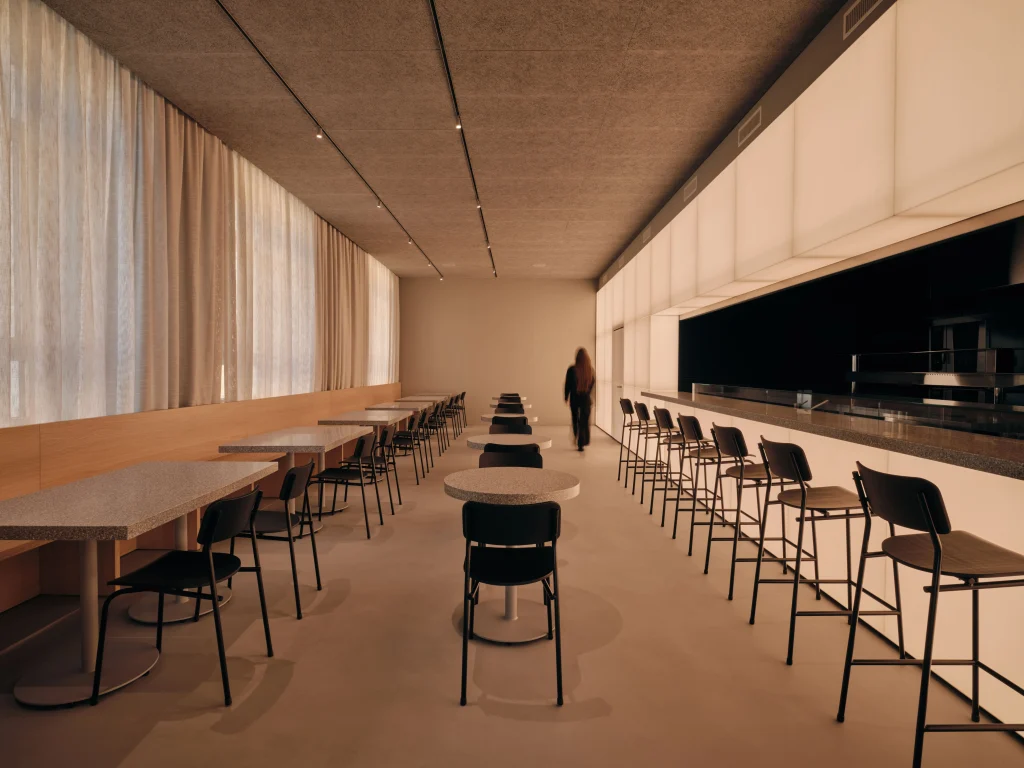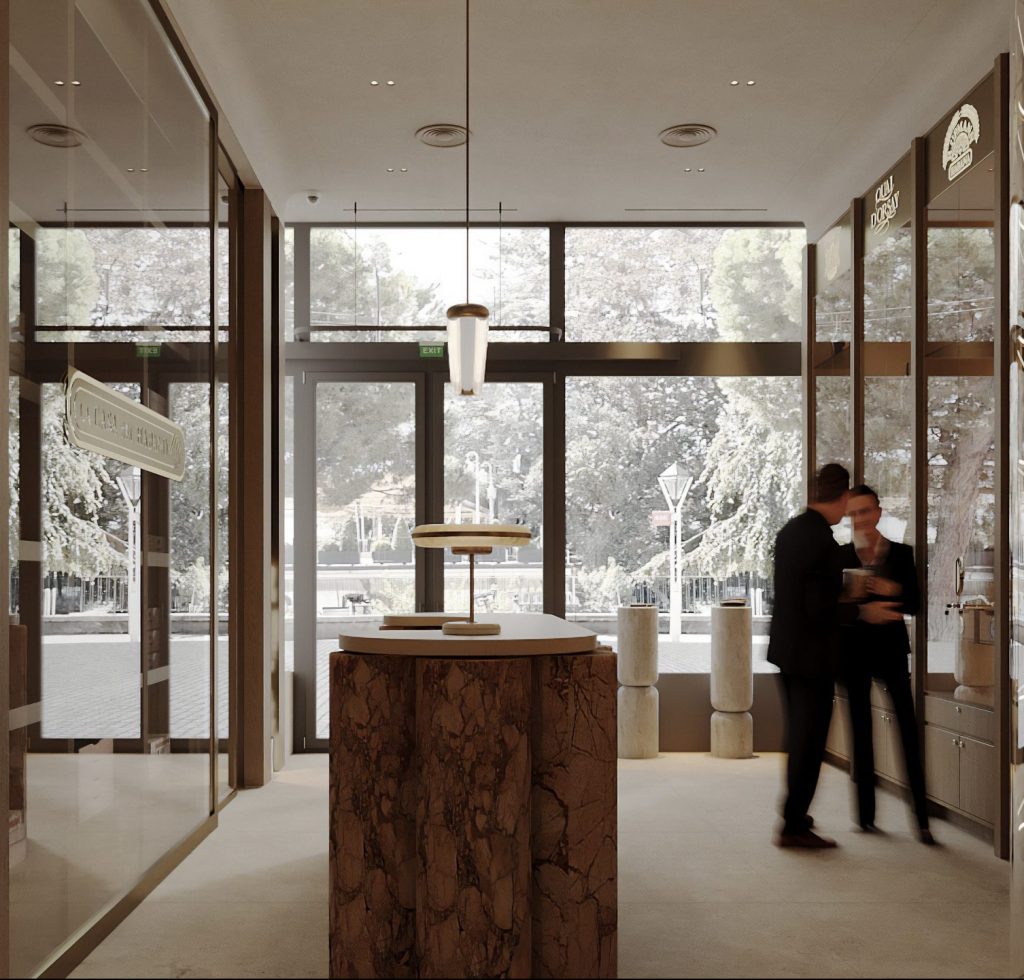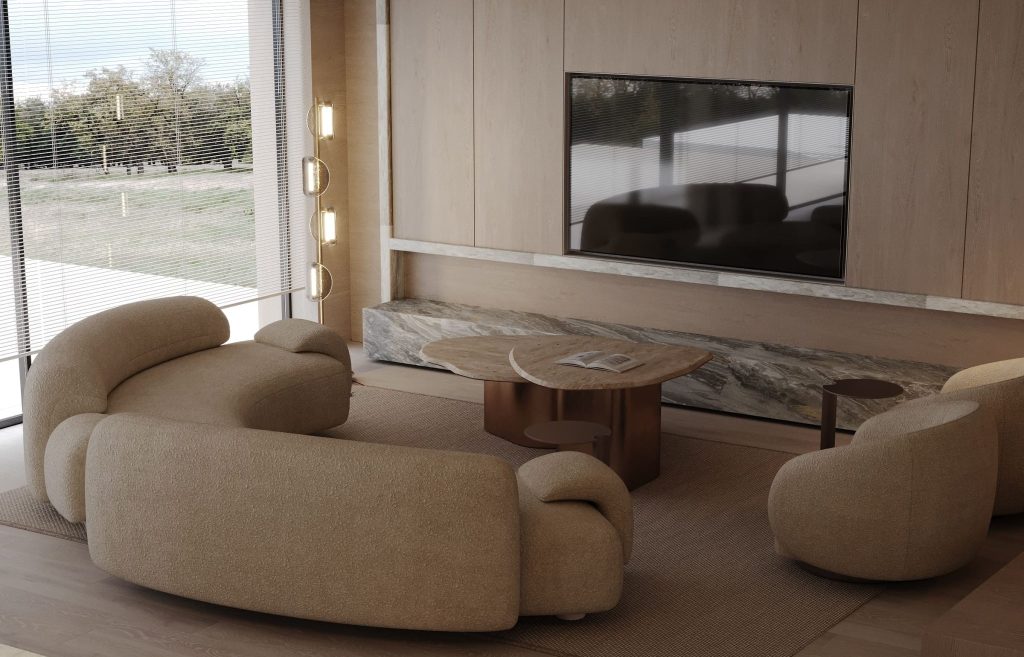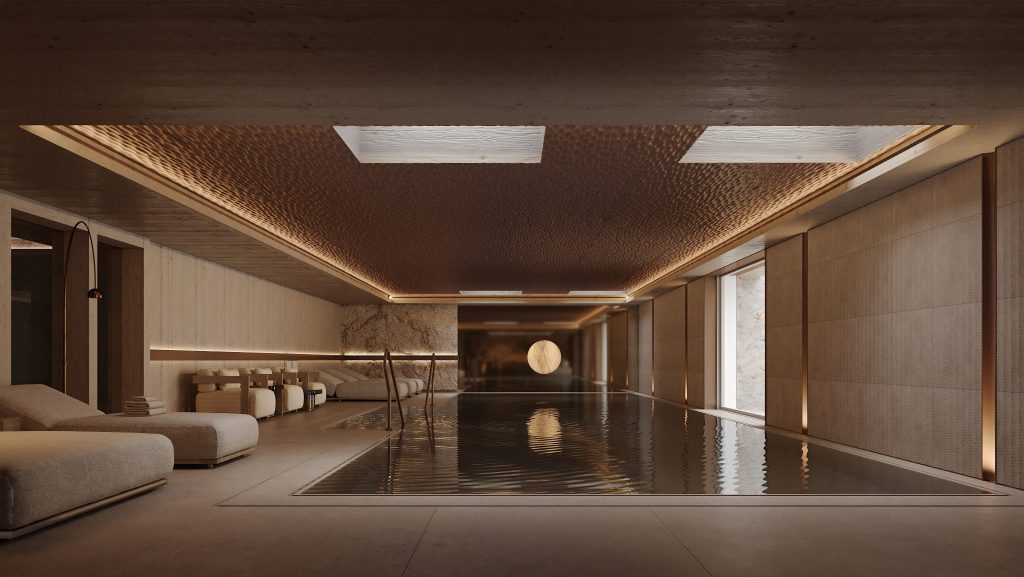How do you make biophilia design work in your home and what is it?
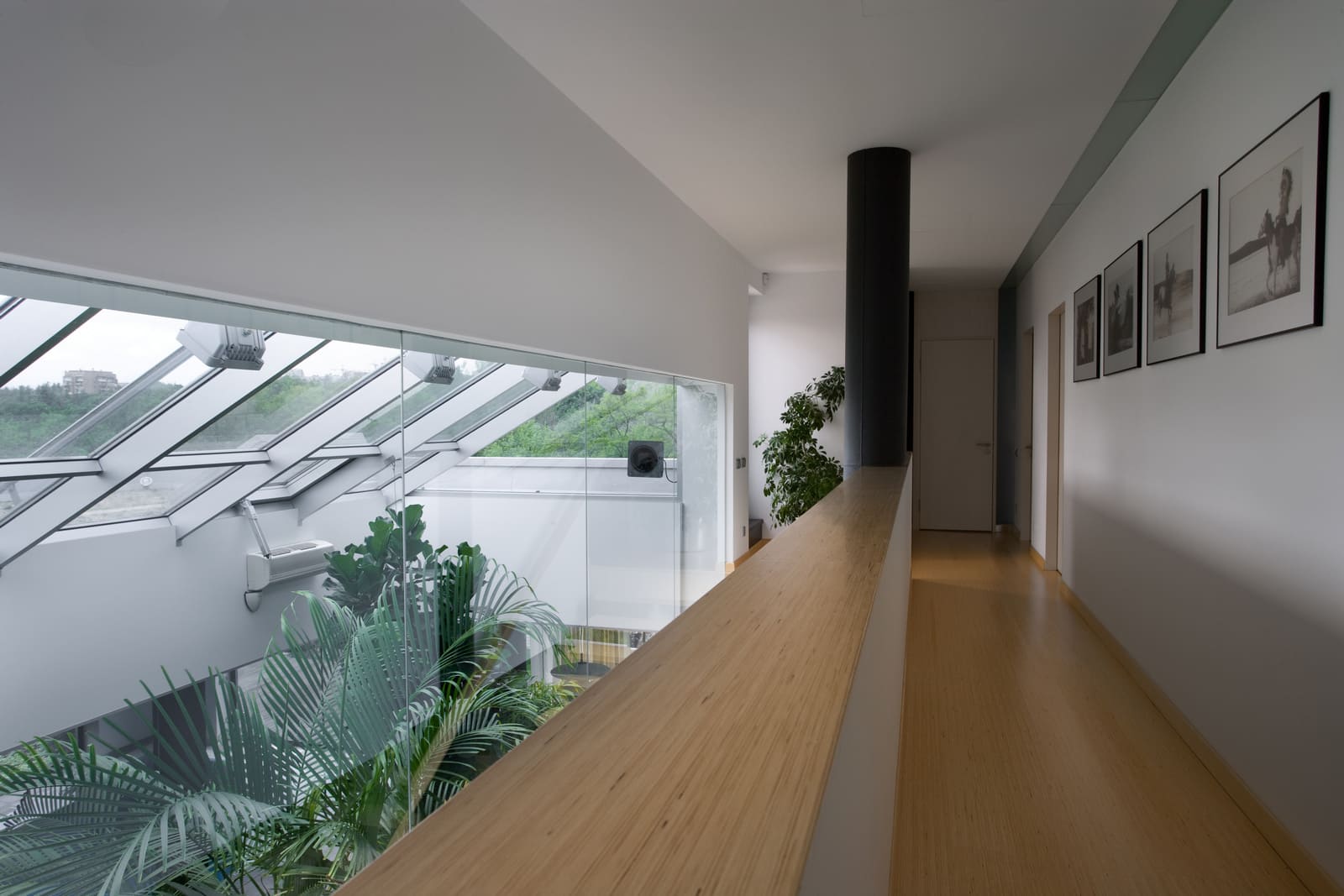
In a fast-paced world dominated by concrete jungles and digital screens, there is a growing appreciation for the innate human connection with nature. This connection has spurred the emergence of biophilic design, a concept that seeks to bring the tranquility and vitality of the outdoors into our built environments. Biophilic design principles not only enhance aesthetics but also contribute to overall well-being. This article delves into the essence of biophilic design and offers insights into how you can effectively incorporate these principles into your home, creating a harmonious and inspiring living space.
What is biophilic design?
Biophilic design is rooted in the term "biophilia" coined by biologist E.O. Wilson; its definition refers to the integration of nature and natural elements into architectural and interior design. This approach seeks to evoke a sense of connection and affinity for the natural world, enhancing human well-being, creativity, and productivity. It goes beyond mere aesthetics, aiming to create spaces that nourish the mind, body, and soul.
Biophilic home design:

Relation to climate
Biophilic design is based on the inherent human need to connect with the living environment. However, access to nature can look very different depending on the region where a person lives, as well as the surrounding culture, climate, and even population density. As a result, a biophilic design created in the desert cannot and should not be replicated in a four-season climate. Biophilia can be expressed in home design or decor in a variety of ways. One can be surrounded by nature itself, or one can bring plants into a building.
The Benefits of Biophilic Design
Adopting biophilic design principles offers a range of advantages. Research suggests that exposure to nature-inspired environments reduces stress, enhances cognitive function, and promotes well-being. In workplaces, integrating biophilic elements has led to higher employee satisfaction and productivity. This trend is evident in the rise of biophilic offices, where natural light, indoor greenery, and flexible spaces combine to create holistic and engaging work environments.
Biophilia in Architecture
Biophilic design extends beyond surface aesthetics and permeates architectural practices. Architects are reshaping structures to seamlessly include elements of nature. An example is the integration of green roofs and living walls, where plant life becomes an integral part of the building's facade. Beyond aesthetics, these features provide benefits like enhanced insulation and reduced energy consumption. Furthermore, biophilic architecture prioritizes views of natural landscapes, blurring the boundaries between indoor and outdoor spaces and fostering harmony between the two.
Biophilic design architecture:
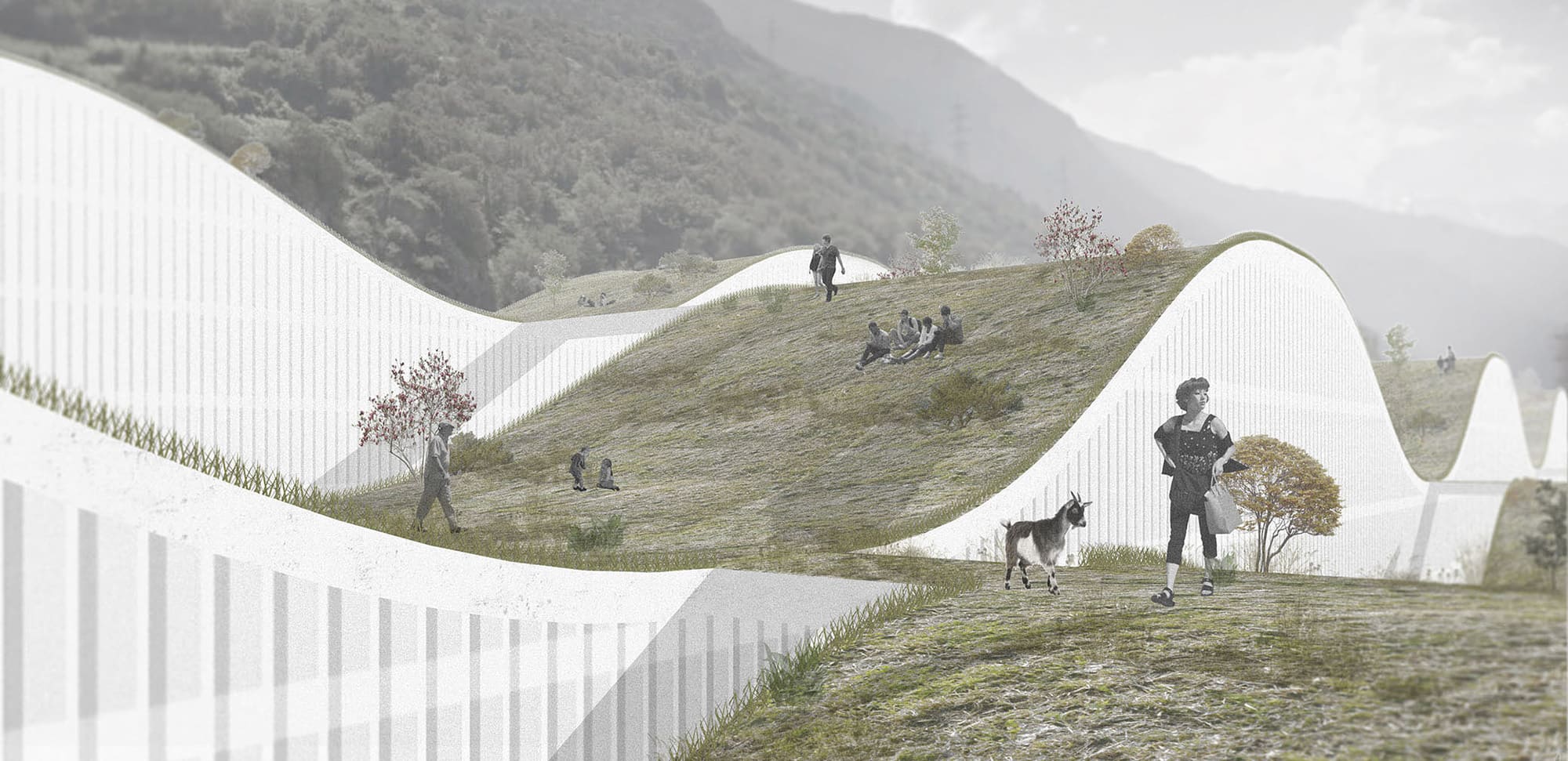
Biophilic Offices
Biophilic design has extended its influence to workspaces as well, promoting employee well-being and productivity. Biophilic offices prioritize access to daylight, comfortable green spaces, and ergonomic furniture. These environments nurture creativity and collaboration, ultimately leading to a healthier and more engaged workforce.
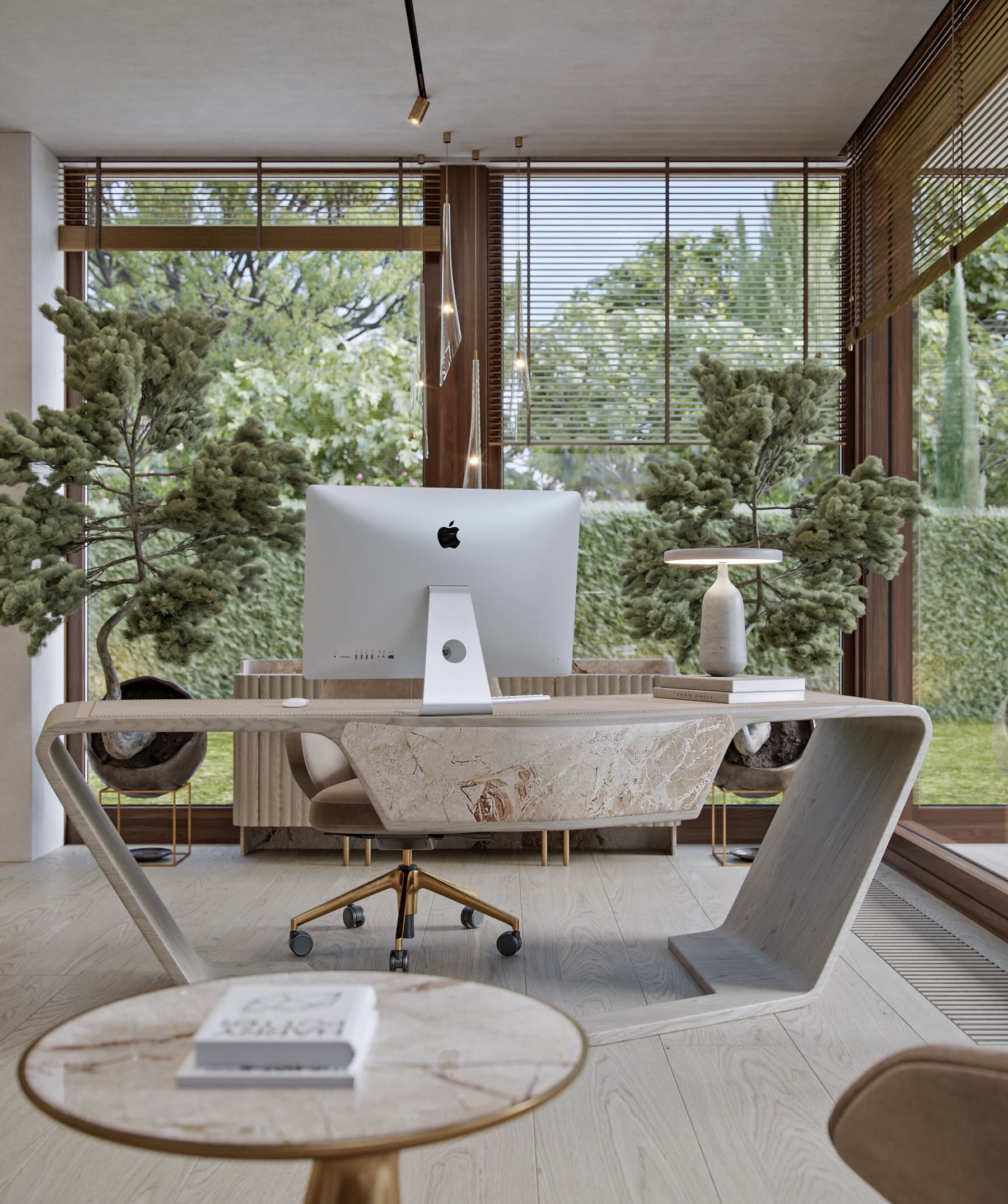
5 Ways to Create a Biophilic Home
1. Embrace Natural Materials
Incorporating natural materials into your residential biophilic design can establish a strong connection with nature. Changing synthetic surfaces to wood, stone, and marble will create a warm and calming space. Don't forget about natural elements when selecting accessories. Choose ceramics with natural finishes and soft décor made of wool, cotton, leather and silk.
2. Green Up Your Space
Introduce indoor plants and greenery throughout your home to bring life and vitality. Explore different plant varieties and placement options to suit your space. In the 60's and 70's, there was a boom in indoor plants. Today, they are an increasingly popular way to add personality to your space. Ficus lyre, Chinese money tree, yucca, aloe and crested chlorophytum are perfect choices for a spectacular but easy-to-care-for plant.

3. Maximize Natural Light
Enhance natural lighting by using large windows and skylights. This will not only reduce the need for artificial lighting but also create a more inviting and biophilic atmosphere.
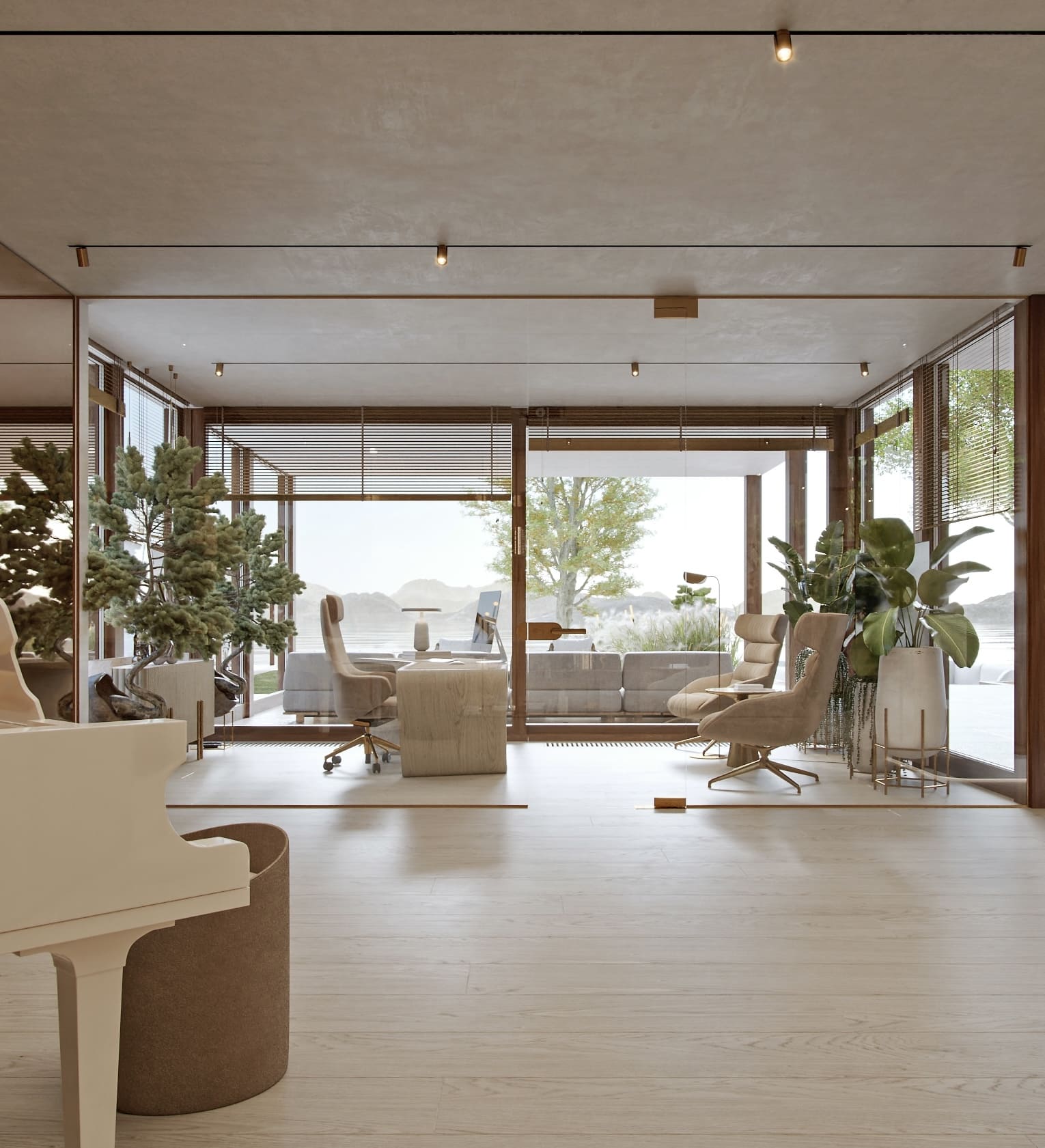
4. Nature-Inspired Color Palette
Select a color palette inspired by the outdoors. Earthy tones, soft greens, and calming blues can evoke a sense of biophilia in your residential interior design.
Here's how to harness the power of color:
- Earthy Tones: Earthy colors like warm terracotta, rich brown, and sandy beige ground your space in natural elements.
- Soft Greens: Soft green hues reminiscent of leaves and grass create a soothing ambiance. Sage and mossy greens bring the tranquility of nature indoors.
- Calming Blues: Cool blues evoke the serenity of water and sky. Pale blues and aqua tones invite a sense of relaxation.
5. Incorporate Biophilic Decor
Transform your living space with decor that brings the outdoors in. Choose artwork, sculptures, and furnishings that reflect the beauty of natural elements like landscapes, organic shapes, and patterns found in nature.

In a world yearning for equilibrium between technology and nature, biophilic design stands as a beacon of hope. By integrating biophilic design into your home, you embark on a journey that nurtures your connection with the environment while elevating your living experience. Through the thoughtful incorporation of natural elements, textures, and patterns, your living space transforms into a sanctuary where the beauty and vitality of the outdoors converge with the comforts of modern living. As you embark on your biophilic design venture, remember that the essence of this approach extends beyond aesthetics—it is a profound celebration of the harmonious relationship between humanity and nature.
